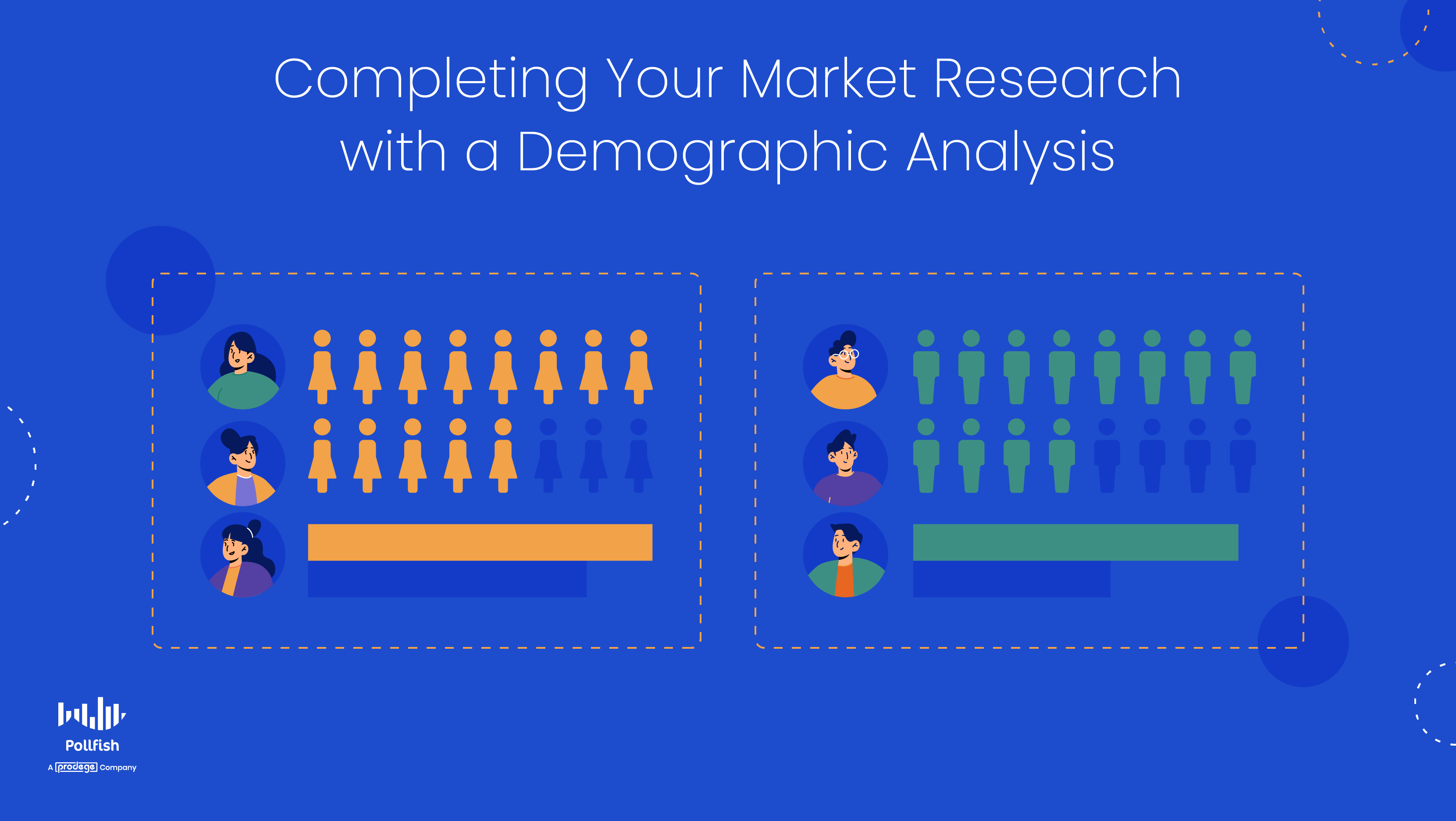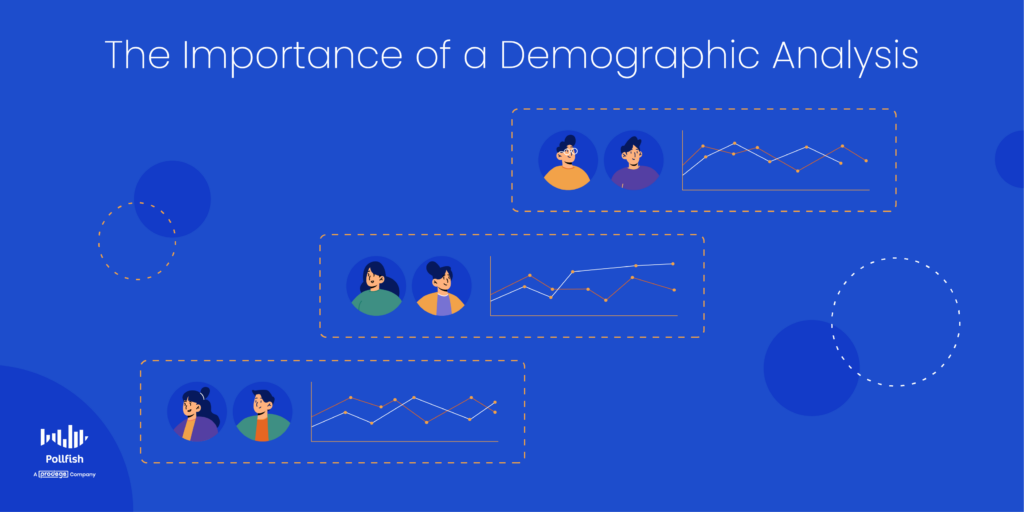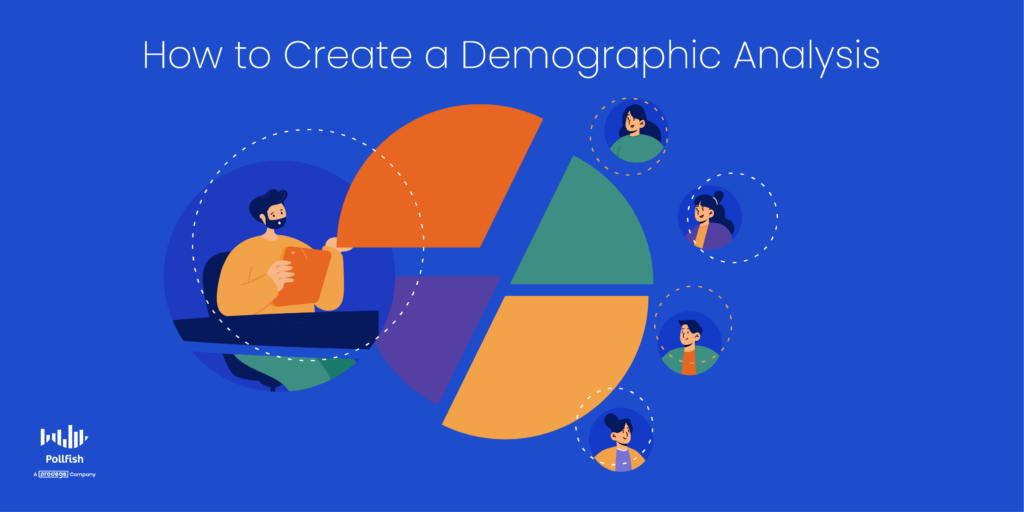Forming a Demographic Analysis to Complete Your Market Research

Conducting a demographic analysis is a critical component of your market research and consumer analysis efforts.
In today’s hyper-competitive age, you need to understand your market precisely, including its key players, namely your target market — the group of customers most likely to buy from you.
To market successfully, your target market can’t be anyone. Instead, you’ll need to narrow down the targets of all your marketing campaigns by identifying them and running an analysis on them in relation to your products and services.
There are many characteristics making up a target market, with demographics being at the forefront. As such, it is key to begin your target market analysis by running a demographic analysis.
This article expounds on the demographic analysis, including its importance, makeup and how to properly conduct one to complete your market research.
Understanding the Demographic Analysis
Also called a demographic market analysis, a demographic analysis refers to the collection and examination of a specified list of characteristics pertaining to groups of people and populations. These characteristics differ from those used in a psychographic or lifestyle analysis.
A demographic analysis is a kind of technique that identifies and analyzes the demographics of a population. It then uses this data to develop an estimate of the population. This technique allows market researchers to understand key demographic aspects of its target market. Demographic data includes the following factors:
- Age
- Gender
- Race
- Ethnicity
- Socioeconomic information including:
- Employment
- Education
- Income
- Marital status rates
- Location data including:
- Country of residence
- State, territory, county, zip code, etc.
- Device usage
- Which device
A demographic analysis involves learning about the amount of each kind of demographic group present in a target market. This is because a target market is not one set of demographics; rather it is a multitude of demographic groups consolidating into the broad group that comprises all your target customers.
As such, a demographic analysis is used in market segmentation, along with when you construct customer personas. These market research techniques involve classifying and breaking down your target market into smaller, more defined groups that are easier to target than the overall target market.
Aside from studying the composition of a target market, a demographic analysis is also used to develop an understanding of how a population has changed over time. This involves evaluating birth, death, and migration.
In addition, you can further analyze how demographics have changed by conducting longitudinal studies via longitudinal surveys. These allow you to study a population over a period of time.
All in all, a demographic analysis includes all the aspects that allow researchers to measure the dimensions and dynamics of populations.
The Importance of a Demographic Analysis
A demographic analysis is critical to market research for a number of reasons.
First off, it is the chief method of identifying and classifying your target market, which represents those who are most likely to patronize your niche and products and most importantly, your business.
Before you can study your customer behavior, consumer preferences and how to create your marketing campaigns accordingly, you’ll need to know the core aspects of your target market, which is its demographics. This is because you wouldn’t be able to scope out the habits and lifestyles of your customers, if you don’t even know who they are.

Next, this kind of analysis can assist you with two other key objectives. These include the following:
- Discovering the sectors and subgroups making up the population
- Generating a comprehensive portrait of the traits that a typical member of each of these sectors possesses.
These two methods allow you to get a comprehensive understanding of the statistical information of all those in your target market. With this information in tow, you can move forward by studying your target population more closely, by conducting a psychographic analysis.
This analysis is also useful in that it allows you to form a specific demographic profile. Also called a customer persona, this profile presents information about a typical member of a certain customer segment. It assists in creating a visual representation of a hypothetical target market. For example, a market researcher may focus on the following persona: single men between the ages of 18 and 34, and are college-educated.
A demographic analysis is particularly valuable if it is used to compare demographics residing in different places. This is not just useful for those operating brick-and-mortar shops, as digital businesses must understand all of their customers and how to appeal to them.
And since it is unlikely for all customers to live in one area, it is key to study demographics across geographies. As such, it is also useful for local SEO, in which digital users are targeted by their location.
It is useful to provide two comparison sets of data: comparable communities and the state or United States as a whole.
Demographics are important to analyze, as they allow marketers and market researchers to comprehend how their target market searches for information online, along with how it purchases products.
In this way, demographic data is particularly useful for businesses, as it enables them to understand how to market to their consumers, which helps raise sales and revenue. In addition, understanding your demographics allows you to plan strategically for future campaigns.
All in all, demographics are critical for market research, given that demographics encompass human populations and how they impact the market.
How to Form a Demographic Analysis for Market Research
To create a demographic analysis, particularly for market research, you’ll need to understand who makes up your target market.
As such, you’ll need to gather this info by eliciting information on who buys products and services in your niche. You can also do so by discovering your demographic makeup from customers who have already purchased from you.

This requires conducting both secondary and primary research. The following steps provide a walkthrough on how to create a demographic analysis:
- Begin by conducting secondary research. Start at the general level by scouting for articles and other resources on the demographics in your niche.
- Use demographic data on particular locations from government websites.
- For example, the US Census Neighborhood Explorer.
- Based on your secondary research, put together your findings into preliminary customer segments.
- Then, use market research software to conduct primary research.
- You can opt for syndicated research, but you won’t control the study, should you take this route, as it will be proprietary to the market research firm you use, along with its partnering companies.
- Create surveys with screeners that require the demographics you’ve discovered from your secondary research.
- It is optimal to create a single survey with multiple audiences — whether you’ve conducted secondary research or have obtained little to no secondary demographical data.
- This way, you can ask multiple audiences for their thoughts on your niche and whether they would buy your products or services.
- You can segment your demographics more accurately this way, as your survey results may not perfectly align with your secondary research.
- Be sure to send your surveys to specific people, such as previous customers or those on an email list, aside from only deploying your surveys via your online survey platform.
- It is crucial to send follow-up surveys, or at least follow-up questions that ask for more clarification on preceding questions.
- Your market research platform should offer advanced skip logic to do this, as it routes respondents to relevant follow-up questions based on their answers to previous questions.
- Make sure you iterate your survey research by covering all demographics, as you may have some demographics in your target market that you are completely unaware of.
- Analyze your findings.
- Put together a document with various segments based on their demographics.
- You may use them to build preliminary customer personas.
- Start coming up with questions for a psychographic analysis, which covers lifestyles and behaviors.
Understanding the Makeup of All Your Customers
A target market analysis is of the utmost importance before you tackle any marketing campaign. It begins with conducting a demographic analysis, which informs you of the statistical makeup of various characteristics of your consumers.
In order to carry out an accurate and timely demographic analysis, you’ll need a quality online survey platform.
You should use an online survey platform that makes it easy to create, deploy and analyze all kinds of surveys. It should offer random device engagement (RDE) sampling to reach customers in their natural digital environments, as opposed to pre-recruiting them.
Your online survey platform should also offer artificial intelligence and machine learning to remove low-quality data, disqualify low-quality data and offer a broad range of survey and question types.
Additionally, it should also allow you to survey anyone. As such, you’ll need a platform with a reach to millions of consumers, along with one that offers the Distribution Link feature. This feature will allow you to send your survey to specific customers, instead of only deploying them across a vast network.
With an online survey platform with all of these capabilities, you’ll be able to quickly gain insights into your customer demographics and analyze them at speed.
Pollfish Marketing Team
Ready to Try Pollfish?
Create your survey with AI, target high-quality respondents starting at $0.95 per complete, and start getting results in just minutes in real-time. From running a simple product concept survey to managing a constant stream of trackers for dozens of clients in dozens of countries, we’ve got you.
